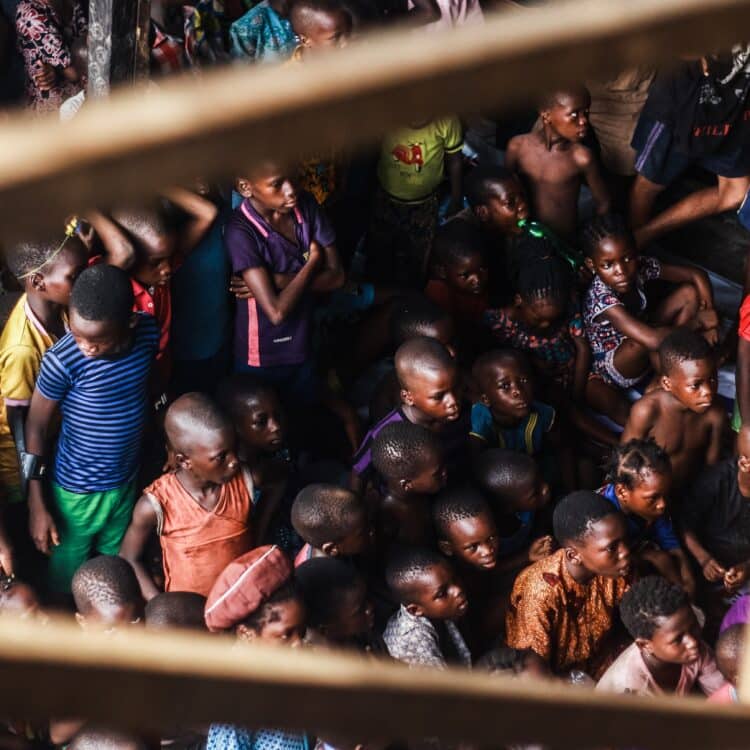
A new collection of papers – Towards Gender Equity in Development – sets out to “explore key sources of female empowerment and discuss the current challenges and opportunities for the future” in three categories: marriage, outside options, and laws and cultural norms. The final published book is available for free, and the individual chapters are available as working papers.
In the introduction, Anderson, Beaman, and Platteau discuss the current landscape of gender discrimination in low- and middle-income countries. In a set of tables that I’ve transformed into a single, completely unwieldy figure. We see discrimination in social norms, legal rights, and marriage indicators. (In all of these indicators, 100% is the worst; 0% is the best.) What stands out is that while no single region dominates the discrimination landscape, every region has significant room to improve. West Africa has high rates of female genital mutilation, South Asia has high rates of son bias, Central Africa has high rates of polygyny, West Asia has high mobility restrictions on women, and the Caribbean has few to no laws against harassment.
Here’s a quick rundown of the other articles in the collection:
Marriage
- “Anywhere between 18.5 per cent and 21.5 per cent of ever-married Senegalese women have experienced widowhood, while somewhere between 13.2 per cent and 17.3 per cent have experienced a divorce.” Poor women are more likely to become widows; urban, more educated women are more likely to divorce. “Poorer women among both the widowed and divorced are more likely to remarry often joining a polygamous union, and for widows, a levirate one… Our analysis suggests that divorce is a means for some women to escape family authority and gain a relatively comfortable autonomy; while widowhood is correlated with more negative consequences in terms of welfare.” (Lambert, van de Walle, & Villar; working paper; Senegal)
- “Uncertainty about spouses’ HIV status contributes to marital dissolutions. Innovations, such as HIV couples’ testing and counselling—and, in the future, possibly rapid self-testing—that reduce this uncertainty can thus have profound impacts on marital behaviours and stability.” Specifically, in Malawi, “two years after the HIV testing, we find a 3.8 to 4.8 percentage point reduction (from a base of 7.7 per cent among couples offered individual testing) in the likelihood of divorce or separation among couples who learned their HIV-negative results together.” (Thornton & Kohler; working paper; Malawi)
- Everything you ever wanted to know on the theory and empirical evidence about bargaining within the household. “The empirical literature on intra-household decision making documents a large number of clear departures from first-best efficiency in household decisions in developing countries” (#AcademicUnderstatement). The authors also lay out areas that have yet to be modeled: “Our survey also indicates a number of interesting issues that require a nonco-operative approach and have been overlooked by the literature so far.” (They’re all in the last paragraph of the paper!) (Baland & Ziparo; working paper; cross-country)
- How does internal displacement affect women’s attitudes about domestic violence? “Forced migrant women endure violence for longer and of greater intensity before deciding to seek assistance.” Specifically, “Kurdish women who migrated from their homes during the conflict are more likely to believe that a husband is justified in beating his wife,” and “women who were forced to migrate are 16 percentage points more inclined to believe domestic violence is acceptable.” (Gulesci; working paper; Turkey)
- Based on a sample of 300+ couples in the Democratic Republic of the Congo, there is “no evidence that a larger bride price payment is associated with earlier marriage or with higher fertility.” In fact, “larger bride price payments are actually associated with better-quality marriages as measured by beliefs about the acceptability of domestic violence, the frequency of engaging in positive activities as a couple, and the self-reported happiness of the wife.” (Lowes & Nunn; working paper; Democratic Republic of the Congo)
Outside options
- What works to reduce early pregnancy? A review of 30 papers suggests that “the more recent trend focusing on the expansion of economic opportunities shows a lot of promise… documenting sustained improvements in behaviour and reductions in early pregnancies.” Then the authors present new evidence from health and entrepreneurship training in Tanzania: Both trainings has some impact, but the entrepreneurship training noses ahead. They analyze 3,000+ essays written by adolescent girls in the process, which gives us a chance to hear directly from some of these young women. (Berge et al.; working paper; Tanzania)
- “In Africa, female participation in entrepreneurial activities is higher than in any other region, with women representing about half of non-farm business ownership.” BUT in Uganda, “only 6 per cent of women operate in male-dominated sectors (i.e., where over 75 per cent of enterprises are male-owned).” What will help women to join these more lucrative sectors? A combination of information, mentorship, and early exposure. (Campos et al.; working paper; Uganda)
- “Microfinance institutions are commonly identified as empowering women and making them key actors in generating social change and economic development.” But what about the women who work for them? “There is close to gender parity at the entry level but gender gaps favouring men emerge at the higher ranks, and this is particularly true in the administrative career path.” Also, “female loan officers more likely to be working with clients who have had previous loans, and better terms.” (Ganguli, Hausmann, & Viarengo; working paper; unnamed country in Latin America)
- Playing public goods games in Liberia, “women contributed substantially more to a small-scale development project when playing with other women than in mixed-gender groups, where they contributed at about the same levels as men.” Why? “Women placed great intrinsic value on contributing to the production of public goods when they knew that they were working collectively with other women.” (This contrasts with an experiment in Kenya, where women contributed less in mixed groups because they had pessimistic views how players in those games would behalf.) What does it mean? “Our main result thus supports the logic of practitioners who seek to engage communities through women-only groups.” (Fearon & Humphreys; working paper; Liberia)
- A “social mobilization effort” in rural Pakistan “focused on encouraging self-help and collective action within the community as well as better linkages with government.” It included a “strong focus on increasing the participation of women in the village-level decision-making bodies.” Women emphasized health care as a priority, and the result was no higher utilization of primary health care facilities but yes reduced wait times, more post-natal care. It was also more likely that a woman had been visited by a health worker, and the quality of those visits rose. (Giné, Khalid, & Mansuri; working paper; Pakistan)
Laws and cultural norms
- How are women affected when the state reverses progress on women’s rights? In the late 1990s, El Salvador made abortion a crime in all instances and began to prosecute it heavily. Piecing together a range of evidence and telling four women’s stories in detail, Viterna and co-authors demonstrate the impact of the abortion ban and show how its “effects were exacerbated by failures of the state in other areas of women’s lives,” such as a failure to guarantee women due process, education, and health care, and to protect them from abject poverty, child labor, abusive labor conditions, and violence. “By including ‘rights reversals’ in their analyses, scholars of gender and development can begin to investigate whether gender progress in some areas of governance can coexist with, or even contribute to, rights reversals in others.” (Viterna et al.; working paper; El Salvador)
- How do “legal systems with Islamic elements treat women”? “In a large number of Muslim-majority countries, legal practices have been consistent with a broadly progressive agenda.” But not everywhere! “These aspirations are not universally shared, however, in particular in the Gulf states.” (Bowen; working paper; Tunisia, Indonesia, and Iran)
- “The introduction of the One Child Policy” in China “dramatically increased sex selection in certain regions,” and “the Chinese government responded to this by allowing parents who had a daughter as their first child to try for a second child… The increase in family size caused by this relaxation in the One Child Policy increased school enrolment of first-born daughters.” In other words, in this context, “first-born children benefit from having a younger sibling.” (Qian; working paper; China)
- When is social engineering most likely to be effective in “suppressing gender-biased customs?” If you can’t get into this paper’s microeconomic theory, jump to the conclusion, which lays out what is most likely to work and when. “When women’s empowerment is slow to materialize, the struggle to achieve gender parity must be supported by reforms and institutional interventions directly addressing the problem.” (Platteau, Camilotti, & Auriol; working paper; theoretical)
- “When we group households using conventional, government-defined categories of caste… lower-caste women are more likely to participate in the labour market, have greater decision making autonomy within their households and have greater freedom of movement.” BUT “aside from the government’s categories, caste is lived, experienced, and practised in everyday life as jāti” – “groups whose identities are manifested in a variety of ways: occupational status, property ownership, diets, gender norms, social practices, religious practices emphasizing purity and pollution, and systems of self-governance.” People often call them “sub-castes,” but they don’t always line up within government-defined castes. And it turns out that “the overall relationship between caste and female employment is driven by specific jatis.” So seeking to improve women’s status through caste-focused interventions may not work as expected. (Joshi, Kochhar, & Rao; working paper; India)
- Most of the research on “missing women” has focused on Asia. But what about Africa? “Overall, there are more than 1.7 million excess female deaths each year in Africa. Expressed as a fraction of the female population, the African numbers are significantly higher than their Chinese or Indian counterparts. Roughly 425,000 of these excess female deaths in Africa are in the younger age category (zero to 14 years old), while the remaining 1.3 million are in the older age category (15 to 59 years old)… In both age groupings, the largest numbers are in West Africa.” (Anderson & Ray; working paper; across Africa)




